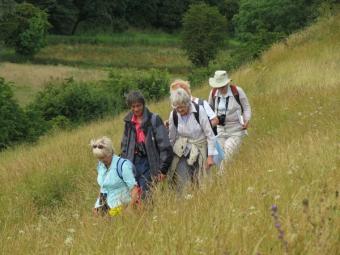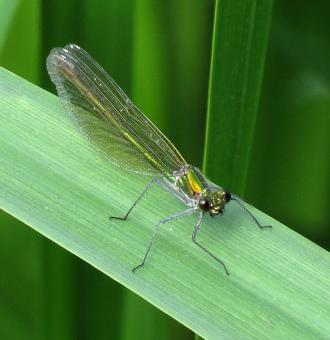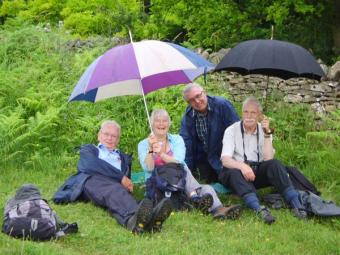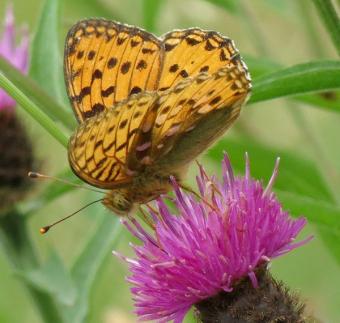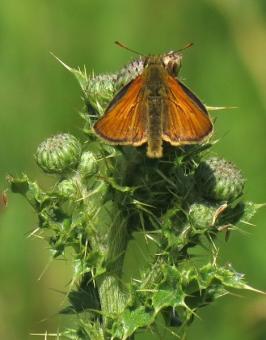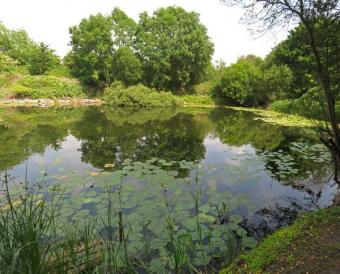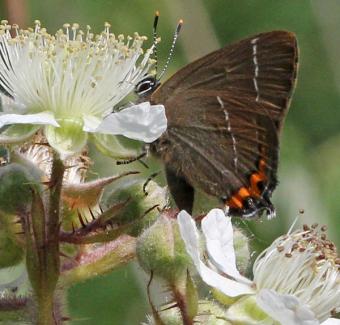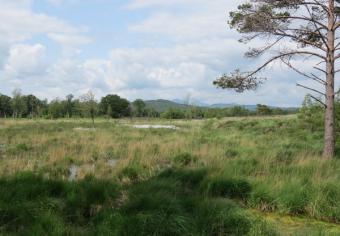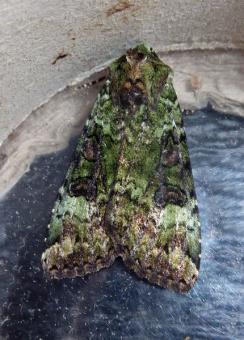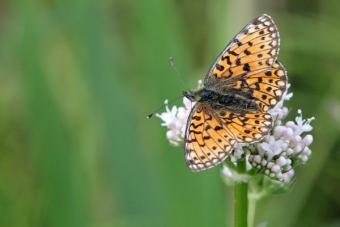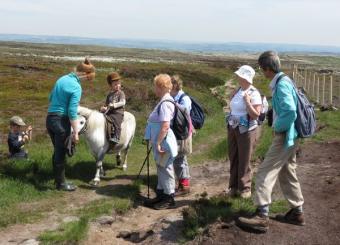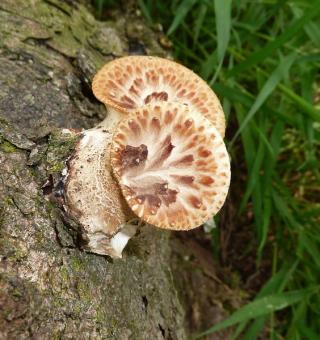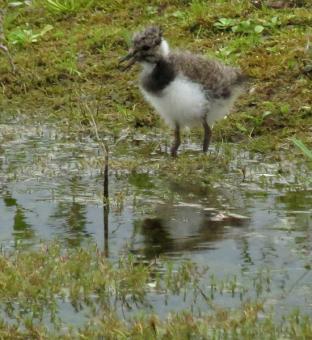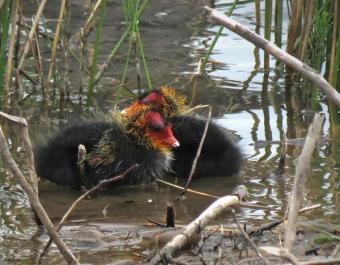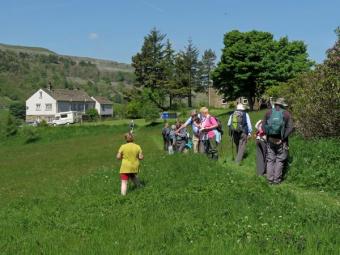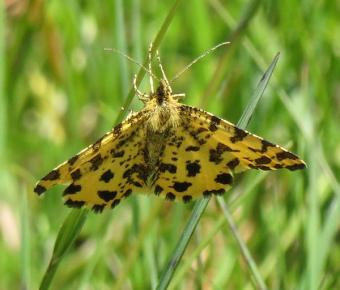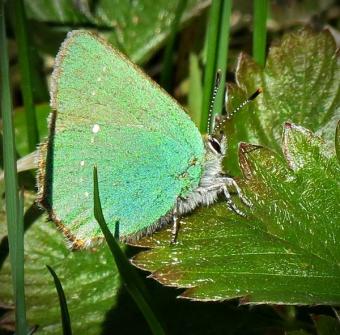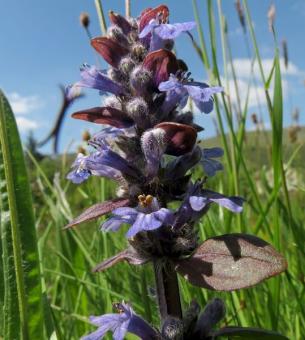WFV, South Humberside Heritage Trail, 6th August 2013
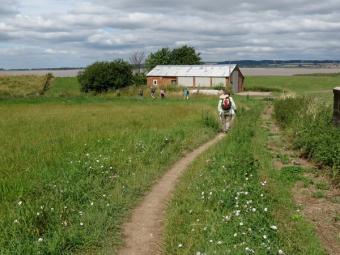 The South Humberside Heritage TrailTwo areas could not have been more different. Last week we were ambling around the limestone grassland and woodland of Brockadale. This week we were walking on the South Humberside Heritage Trail, a linear footpath following the banks of the mighty Humber Estuary and in sight of its magnificent bridge. We made good time on the motorway and met up with new friends Angela and Stuart in the Ness Farm car park of the Far Ings National Nature Reserve.They are both enthusiastic amateur botanists living in the area who met Alice and Margaret on their recent recce. They were helpful and informative companions.
The South Humberside Heritage TrailTwo areas could not have been more different. Last week we were ambling around the limestone grassland and woodland of Brockadale. This week we were walking on the South Humberside Heritage Trail, a linear footpath following the banks of the mighty Humber Estuary and in sight of its magnificent bridge. We made good time on the motorway and met up with new friends Angela and Stuart in the Ness Farm car park of the Far Ings National Nature Reserve.They are both enthusiastic amateur botanists living in the area who met Alice and Margaret on their recent recce. They were helpful and informative companions. 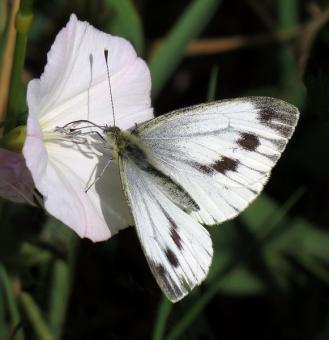 Small White We set off from Ness Farm at our usual slow pace. Angela pointed to a stream that had been alive with water voles in past years. The party was greeted by an overwhelming number and range of butterflies, the count was 10 (how reassuring as they are regarded as an indicator of the health of the environment). They were enjoying the nectar of the plants. Peacocks seemed to have a penchant for Teasel whereas the Small Whites, Gatekeepers, Comma and Peacock were seen dancing around a large patch of Marsh Thistle. Brown Hawker Dragonflies and Blue Tailed Damselflies were seen on the ponds and paths. John reported that he had seen 6 moths including Yellow Shell, Shaded Broad Bar, Silver Y, Udea lutealis, Dingy Footman and Nettle Tap.
Small White We set off from Ness Farm at our usual slow pace. Angela pointed to a stream that had been alive with water voles in past years. The party was greeted by an overwhelming number and range of butterflies, the count was 10 (how reassuring as they are regarded as an indicator of the health of the environment). They were enjoying the nectar of the plants. Peacocks seemed to have a penchant for Teasel whereas the Small Whites, Gatekeepers, Comma and Peacock were seen dancing around a large patch of Marsh Thistle. Brown Hawker Dragonflies and Blue Tailed Damselflies were seen on the ponds and paths. John reported that he had seen 6 moths including Yellow Shell, Shaded Broad Bar, Silver Y, Udea lutealis, Dingy Footman and Nettle Tap. 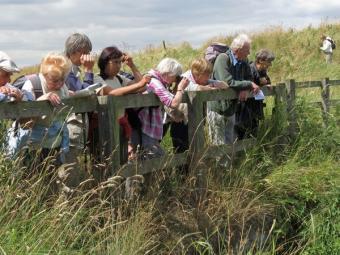 Looking Over The Bridge Our party took equal delight in the special flowers of the area. 138 were recorded in flower. The wetland, field margins, path, reed beds and chalk grassland gave us a varied mix of flowers.The wetland plants included Fool's Watercress, Celery-leaved Buttercup, Water Crowfoot and Water Speedwell. The field margins offered Common Poppy, Wild Mignonette and the pretty Field Bindweed. On the paths were found White Bryony and Prickly Lettuce. On the chalk grassland we found Marjoram, Lemon Balm, Ploughman's Spikenard, Eyebright and Fairy Flax, while in the reed beds were Common Reed, Sea Aster and Bindweed. Many of the flowers were in seed and shrubs and trees laden with fruit. The bird count numbered 20 . Again a variety of birds were seen but in small numbers. Common Terns, Tufted ducks,
Looking Over The Bridge Our party took equal delight in the special flowers of the area. 138 were recorded in flower. The wetland, field margins, path, reed beds and chalk grassland gave us a varied mix of flowers.The wetland plants included Fool's Watercress, Celery-leaved Buttercup, Water Crowfoot and Water Speedwell. The field margins offered Common Poppy, Wild Mignonette and the pretty Field Bindweed. On the paths were found White Bryony and Prickly Lettuce. On the chalk grassland we found Marjoram, Lemon Balm, Ploughman's Spikenard, Eyebright and Fairy Flax, while in the reed beds were Common Reed, Sea Aster and Bindweed. Many of the flowers were in seed and shrubs and trees laden with fruit. The bird count numbered 20 . Again a variety of birds were seen but in small numbers. Common Terns, Tufted ducks, 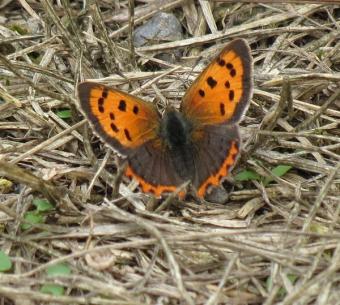 Small CopperGreat Crested Grebes and Greylag Geese were seen on the lakes; Goldfinch and Swallows on the field margins; Reed Bunting and Reed Warbler in the reeds; Lapwing, Curlew and Shelduck on the shoreline. However the highlight was a sighting of a Marsh Harrier. It was observed gliding slowly across a lake before descending into the tree canopy by Margaret on returning to Far Ings. The weather was ideal, warm but cool in places, sunny with a gentle breeze. It remained so throughout the day and for our journey home. A good day out for the 15 of us who enjoyed today's outing. A magnificent job was performed by Stuart in steering the old minibus, rattle and all and returning us to the Unitarian Church car park safely. Thanks to all those who contributed to our day out.
Small CopperGreat Crested Grebes and Greylag Geese were seen on the lakes; Goldfinch and Swallows on the field margins; Reed Bunting and Reed Warbler in the reeds; Lapwing, Curlew and Shelduck on the shoreline. However the highlight was a sighting of a Marsh Harrier. It was observed gliding slowly across a lake before descending into the tree canopy by Margaret on returning to Far Ings. The weather was ideal, warm but cool in places, sunny with a gentle breeze. It remained so throughout the day and for our journey home. A good day out for the 15 of us who enjoyed today's outing. A magnificent job was performed by Stuart in steering the old minibus, rattle and all and returning us to the Unitarian Church car park safely. Thanks to all those who contributed to our day out.
Margaret

